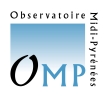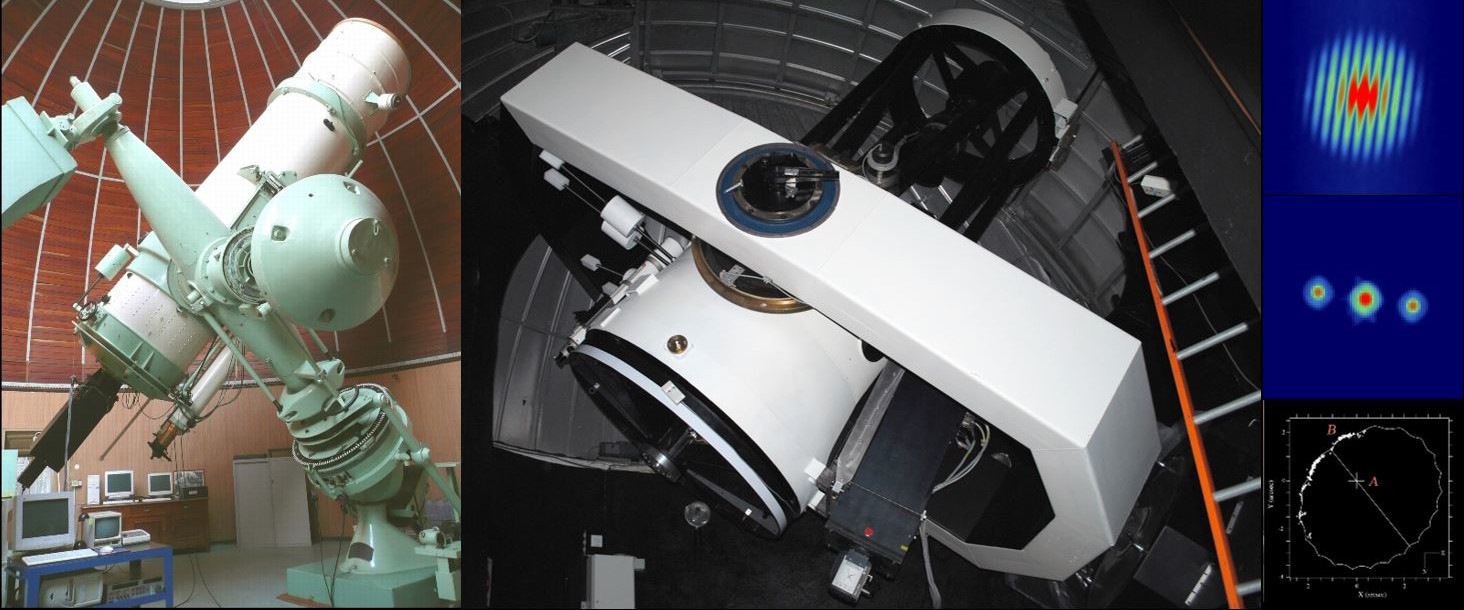PISCO
Web page of the "PISCO" group, built around the PISCO instrument,
for high angular resolution observations
of double stars, and study of those objects.
![]()



|



|

Left: PISCO on the Zeiss telescope in Merate (Italy). In the center: PISCO in its current location on the Epsilon telescope of C2PU-OCA (France). Right from top to bottom: power spectrum of the double star A 1040 observed by PISCO; autocorrelation of the same observation which shows the presence of two stars; orbit, calculated in Merate, of the double star ζ Aqr -- STF 2909 AB, disturbed by a third non-visible star.
Presentation :
PISCO (Pupil Interferometry Speckle COronagraph) is a focal instrument whose purpose is to obtain high angular resolution images using interferometric techniques which permit to circumvent the natural degradation produced by the atmospheric turbulence. Fixed at the focus of a telescope, it allows the acquisition of short exposured images with a large magnification. Chromatic dispersion caused by the atmophere is corrected by Risley prisms. The elementary images are digitized and processed using bispectral techniques, developped by our team. PISCO is now dedicated to the study of binary stars.
PISCO, is a speckle camera that was primarily built for the Bernard Lyot 2-meter telescope at Pic du Midi. It was succesfully operated between 1993 and 1998 on this site and led to a series of scientific papers concerning mainly the field of binary and multiple stars. PISCO was then moved to the 1-meter Zeiss telescope of INAF-Osservatorio Astronomico di Brera in Merate (Italy) where it was operated from 2004 to 2015. Since mid-2015, it has been mounted on the 1-meter Epsilon telescope of C2PU , on the Calern site of Côte d'Azur Observatory (OCA).
The operation of PISCO is supported by the Commission C.G1 of the International Astronomical Union, entitled "Double and multiple stars".
Members of the "PISCO team": Scardia M. (Italy), Prieur J.-L. (OMP), Argyle R.W. (England), Pansecchi L. (Italy), J. Ling (Spain), Koechlin L. (OMP), Aristidi E. (Univ. Nice), Rivet J.-P. (OCA), Bonneau D. (France), Piccotti L. (Spain), Maccarini L. (Italy), Vernet D. (OCA), Serot J. (France).
Contact : ![]() Jean-Louis Prieur
Jean-Louis Prieur
Institut de Recherche en Astronomie et Planétologie (IRAP)
Observatoire Midi-Pyrénées
14, Av. Edouard Belin
31400 Toulouse